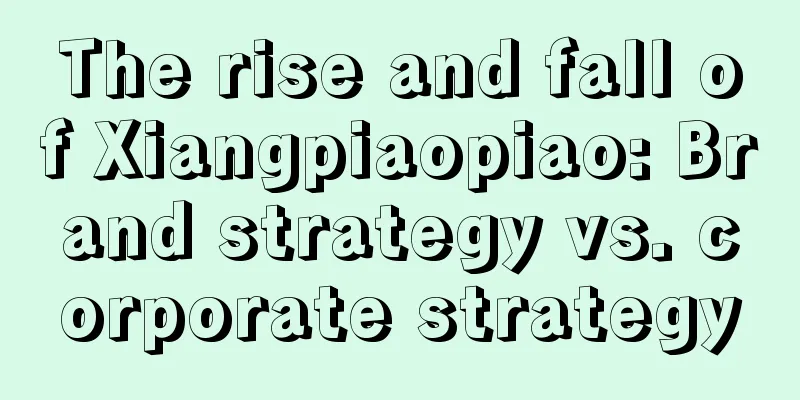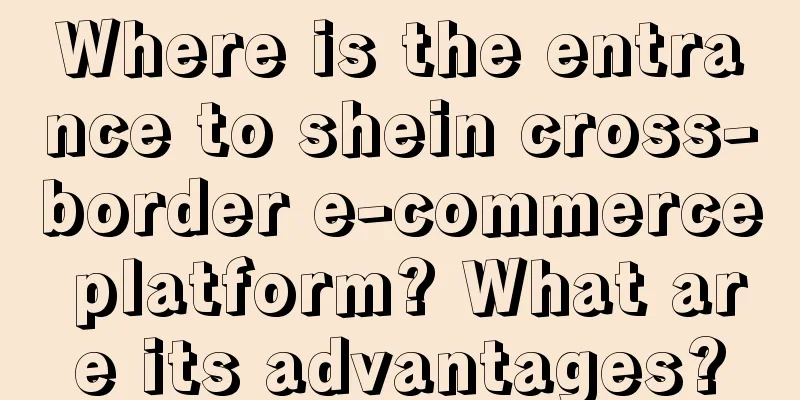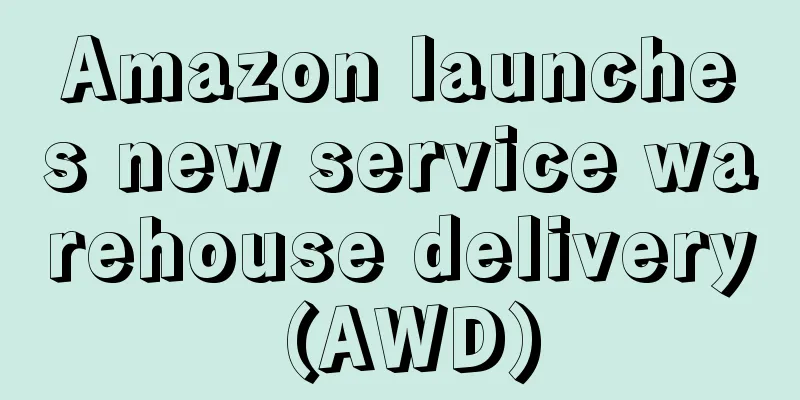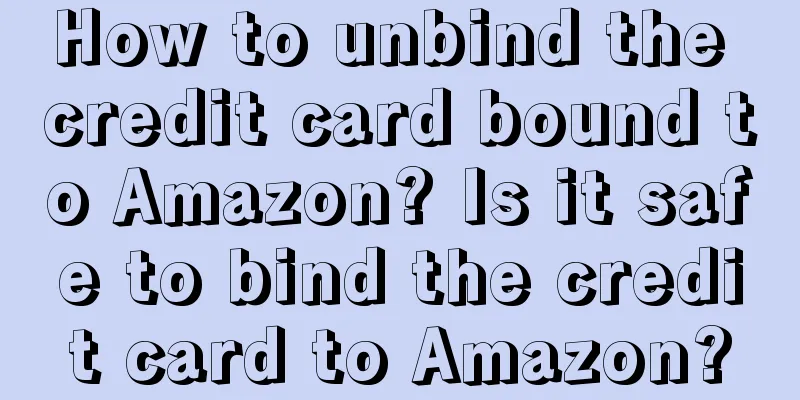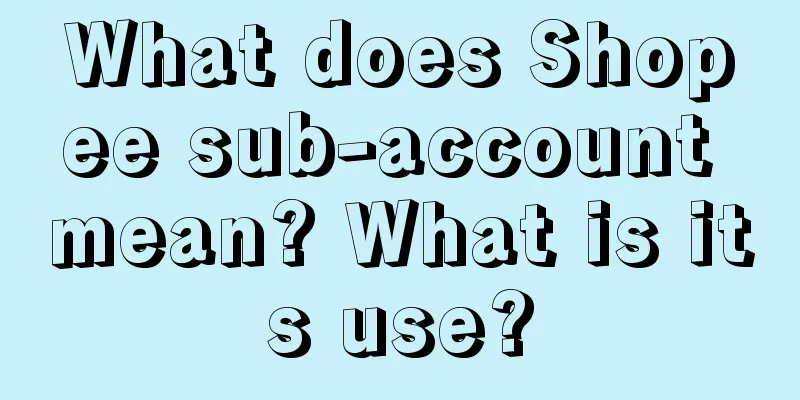Fun = Gold: How to Make Money from Brand Marketing in the Emotional Age
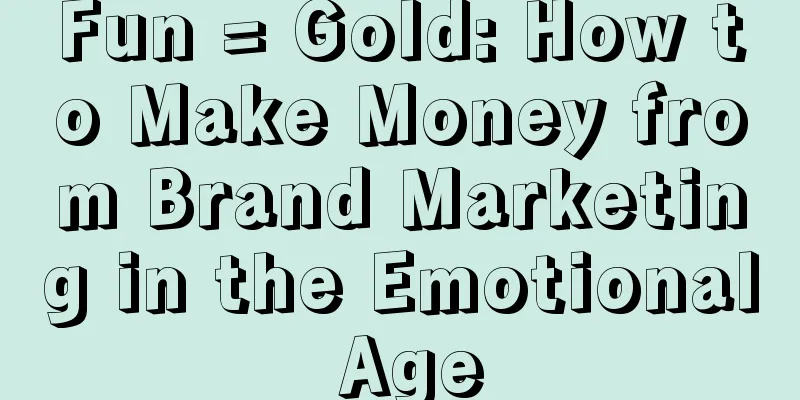
|
A few days ago, I attended the 2024 "Talk About New Things" Tencent Variety Show in Shanghai and listened to the concept of Tencent Variety Show's IP, which is to start from the user's emotional value and focus on user needs. I also exchanged views with several friends in the industry and the media on the current situation and challenges of brand marketing. It can be clearly seen that emotions have become the primary productive force of this era, and there is a gold mine of marketing hidden in the collective psychology and behavior of consumers looking for fun. To tap into this rich mine, we first need to systematically understand the three core challenges of brand marketing today: 1. Low attention The information explosion and algorithmic mechanisms have made it increasingly difficult to capture consumers’ attention. Consumers simply don’t pay attention to the regular hard-branded advertising content of business owners. Not to mention that they have no interest in understanding and participating, they don’t even think about looking up and taking a look. 2. Low Mood "Short escape" has become a popular term nowadays. Consumers are generally tired of work and daily life and are eager to escape. They are not positive in their mentality and have low energy in action. Lying down and slacking off have become common pursuits. In this context, many brand concept promotions will be considered preachy and daddy-sounding, emphasizing problem solving will be accused of selling anxiety, and creating a lifestyle and brand image will be said to be false and unreal... It is becoming increasingly difficult for brand marketing to mobilize user emotions and elicit identification and resonance. 3. Low desire In a low-desire society, consumers have no passion or motivation for shopping, nor do they pursue fashion and taste. For example, keeping ugly clothes for work has become a social phenomenon, with wearing military coats in winter and wearing river trekking shoes to work becoming hot topics. When consumers are in a state of "three lows", it is particularly difficult to do a good job in brand marketing. In this case, how should we deal with the challenge of "three lows" today? I think there are three core secrets: The first is to uphold the value of content and capture users' attention with high-quality content, such as variety show IP. The second is to find the user’s emotional high ground in the content and use emotional productivity to achieve brand gold mining. Third, in the specific scenarios of the content, the product selling points and brand concepts are naturally presented to stimulate user needs and desires. 01 In the content era, variety shows are kingIn the past, the main carrier of brand marketing was advertising, especially 15-second TVCs and print posters. The core information in these hard ads was the brand name, logo, and a slogan. In such an era, the most typical result of brand communication is that consumers remember the brand logo and slogan. For example, when you mention the Nike brand, I believe the first thing that comes to your mind is its hook and the slogan "JUST DO IT"; when you mention McDonald's, you will think of the golden "M" logo and the slogan "I just like it"; when you mention Melatonin, you will think of "No gifts this year"; when you mention Jinjiu, you will think of "Jinjiu is good, but don't drink too much"... However, if we look at the brands that have emerged in the past decade, such as Dyson, lululemon, Guanxia, DJI, Haidilao, Luckin Coffee, Heytea, Nayuki, etc., can you still think of their logos and slogans? You can't think of them, right? This is not because these brands have poor marketing skills or their agencies' copywriting skills are not good, but because the main carrier of their communication and promotion is no longer advertising. When a brand does not invest in hard advertising, the slogan is not very useful, and it is difficult for consumers to remember what the brand logo is. So, what are companies doing in terms of marketing today? The core is content, which has replaced advertising as the center of brand marketing. Only content can capture consumers' attention and stimulate their interest in participation. In the era of content dominance, variety shows are undoubtedly the most popular form of content for users. For example, the hit "Fifty Kilometers of Taohuawu 3" in 2023 became a phenomenal cultural event that was hotly discussed by the whole nation, and even gave rise to a "Woodworks Studies" that became popular outside the circle. And "Let's Go Now" became a new benchmark for the entire network, setting historical records in many data such as the number of reservations, popularity value, and membership activation records. After seeing this performance, I would like to talk about the difference between advertising and content. Advertising is something that companies pay consumers to watch, but consumers don't watch it; while content is something that consumers not only watch actively, but are even willing to pay for. Only by implanting the brand into such content can we achieve greater communication effects and play a greater role in the brand. When I attended the Tencent Variety Show two days ago, I also noticed that consumers are still enthusiastic about comedy variety shows, such as talk shows. Data shows that even without any new programs online, the number of views of talk shows on Tencent Video was still considerable last year. After the announcement of the re-production of talk shows in April this year, related terms directly topped the hot search list, and users' love for talk shows has never been far away. For users, they use fragmented time to watch short videos and often "stop and watch"; but when watching long variety shows, the experience will be more immersive, the energy will be more focused, and they will also search for brands and products that appear in the variety show based on clear interests. For brands, sponsoring and naming variety shows can not only gain greater exposure and traffic, but also allow them to use the variety show's actors and content to present and interpret their own brands and products more vividly and in-depth. For example, in "Fight to the Peak 2", Meituan riders went into battle with great enthusiasm and deeply integrated into the e-sports event from the perspective of the participating team, creating a "famous scene" for the brand. This novel combat mode attracted attention from the entire network. In addition, the program played with popular topics in the e-sports circle in various ways, giving the Meituan brand an image of e-sports fashion. In addition, the program connects the stories of the entire race through "Tuan Tuan", accompanies the team throughout the whole process and establishes brand emotions and relationships of playing and playing together with young people. It can be seen that variety shows not only include basic brand placement and exposure, but also shape the brand image, strengthen the relationship between the brand and users, and can improve brand asset awareness, brand associations, likeability and other dimensions. Overall, for brand marketing, variety shows are still a high point in terms of communication effect among all content forms. Moreover, compared with hard advertising, celebrity endorsements, self-media operations, performance advertising and other forms, variety show marketing is still a low point in terms of cost performance. Looking back at the marketing effects of variety shows in previous years, let's take a look at the three major sections and 27 variety show IPs released by Tencent Variety Show this year. It can be said that Tencent Variety Show is on the eve of an explosion, and it is not a loss to buy at the bottom in 2024. 02 In Tencent variety shows, we found that users are emotionally activeLooking back at many hot topics over the past year or so, such as Dopamine Wear, Dig, Dig, I Have a Hoodie, and the marketing events created by multiple brands on Women's Day and Mother's Day in the first half of this year, we can feel the full emotional value from them. Emotions have become a killer to mobilize users and traffic. Therefore, when Tencent Video created variety show IPs this year, it also emphasized starting from the emotional value of users. In the words of Han Zhijie, vice president of Tencent Online Video at the meeting, it is to "create a Gap Time within reach for users." To this end, Tencent Variety Show segmented the program based on user emotions and launched three major program sections: "Haha Time", "Meet Time" and "Show Time". Haha Time stands for finding happiness and releasing worries. Here are comedy variety resources that are available all year round and can make you laugh out loud, such as the upcoming "Wonderful Night of Happiness", "Talk Show and His Friends", "Comedy Conference", "Laughing Club 3", etc. Another example is Meet Time, which represents relaxation and anxiety relief. It also includes the upcoming "Let's Go 2" and "Signal of Love Season 7". There is also Show Time, which represents releasing the truth and exploring the inner voice. Programs familiar to the audience, such as "Actors Please Take Your Place", "Supernova Games", "Fight to the Peak", and "The Heart-Stirring Offer", all plan to launch new stories this year. Show Time emphasizes awakening the true self deep in the audience's heart in the ultimate reality and extreme emotions, igniting the audience's interest and enthusiasm. With so many different emotions, how can brands make good use of them and do emotional marketing? As we mentioned earlier, today's consumers are generally in a low mood. Everyone is increasingly looking inward, and it is not easy to mobilize and resonate with consumers' emotions. In fact, there are six basic human emotions: happiness, surprise, pain, disgust, fear, and anger. In addition, in 1980, American psychologist James Russell proposed the famous core emotion circumplex model. He subdivided human emotions into two dimensions: "pleasure-unpleasure" and "arousal-depression", and divided them into 4 quadrants with a total of 28 emotions. For these different dimensions of emotions, we need to adopt different content strategies and brand strategies to respond to and leverage them. For example, among all emotions, smiles have the most powerful power, which is also the core content power of variety shows. When consumers are in a happy and aroused mood, it is easiest to market and promote products to consumers. The emotional value of variety shows can easily be transformed into the commercial value of the brand. In layman's terms, this is called "fun is gold." When consumers watch variety shows every day to find fun, brands can find gold in them. For example, "Laugh Out Loud" is a comedy variety show brand created by Tencent Variety Show, which covers a number of popular comedy variety show IPs. They use "laughter" as the background, allowing the audience to immerse themselves in a relaxed and pleasant atmosphere throughout the viewing process. If the brand can integrate into this atmosphere, it can easily break through the audience's brain filtering mechanism, successfully integrate into the user's mind in laughter, and gain full resonance and recognition. Like in "Hahahahaha 4", the dolls of the title brand Zhenxi ice cream and the members of Wu Ha completed the ribbon-cutting and departure ceremony together; in "Talk Show Conference 5", Jindian Juanshan organic milk cleverly integrated the product into jokes, turning the advertisement into golden sentences, and the product selling point into high-energy laughs. In the field of comedy variety shows, the audience is in a happy mood and relaxed, and is more likely to accept brand placement. In addition, the fun and comedy of the oral broadcast also naturally attract the audience with laughter. The high pleasure and high arousal emotional value of comedy variety shows gives more possibilities and imagination to commercialization. On the other hand, when consumers are in a state of worry, anxiety, depression, or unpleasant emotions, they will actively seek out content of interest to find an outlet for their emotions. In brief, there are three approaches that consumers generally adopt: One is returning to nature, such as the continued popularity of travel, camping, and outdoor sports in the past two or three years; Second, they focus on home life and hometown feelings. Cities like Zibo, Harbin, and Tianshui have become popular one after another. The local food with a local flavor, the warm and simple folks, the simple and slow-paced lifestyle, and the familiar and friendly hometown dialect can soothe people's hearts the most. The third is high-quality social interaction among friends. Friday nights and weekends have become the highlight moments for young people. In response to this, Tencent Variety Show has launched a number of related variety shows, such as the travel-focused "Let's Go Now 2", "Healing Planet", "New Travel Legend", "The Lively Yard", etc., which make people feel at ease and secure. For example, the fourth season of "Fifty Kilometers Peach Blossom Village", the seventh season of "Signal of Love", "Sun Market", "Healing Planet" and "Maoxuewang" use sincere emotions and companionship to warm you and me. They not only showcase the spiritual wilderness across the country, but also become an emotional haven for users. This is the purpose of the program in the Meet Time section, allowing viewers to gain healing and nourishment in the natural scenery, the atmosphere of familiar friends, and the relaxed mood, and meet a more comfortable self. Just like in "Fifty Kilometers of Taohuawu", Siweishi appeared many times in the program content and became a catalyst for the relationship between the characters. In these beautiful little details, the audience can easily resonate with the brand and naturally accept the brand. Finally, when the audience is emotionally quiet and their hearts are calm, we need to awaken them through extreme content and realism, let them feel their own existence, and feel the reality and freshness of their own lives. For example, HP, in programs such as "The Heart-Stirring Offer", uses the emotional resonance of workplace people to arouse consumers' empathy for the brand, and interprets the product selling points in multiple dimensions in real workplace scenes. When the audience's emotions are aroused, brand marketing will follow naturally. When user emotions are clearly divided into the three major sections of "Haha Time", "Meet Time" and "Show Time", brands will also know clearly how to capture the various emotions of consumers and how to use and leverage these emotions. 03 Variety show full scene, efficient promotion of brands and productsIn an era of rapid market growth, consumers have a strong desire to shop and are keen on buying. At this time, as long as brands strengthen distribution and push products to consumers, increase advertising to inform consumers and constantly remind consumers of the existence of the brand, people will naturally place orders. However, when consumers are in a state of low desire and are not very interested in shopping, even if they do buy, they will make repeated comparisons and make careful decisions. At this time, it is far from enough for the brand to just expose the brand and let consumers see it. Even if the product functions and selling points are repeatedly promoted, it is difficult to get consumers to place an order. What should brands do at this time? I have proposed a concept in my book called “creating demand through scenarios”. Only when consumers see how products solve their problems, bring real changes to their lives and create meaning in specific life scenarios, will they realize that they need this brand and feel the value of the product. Scenarios are the driving force behind consumer demand and the key to motivating consumers to generate cognitive interest and purchase actions. Therefore, brand marketing is not about extracting products and hyping up their benefits, but about creating opportunities for products to be used in consumers’ real lives, so that brands and consumers can meet in real life. I believe that the value of variety show marketing lies not only in placement and exposure, but also in the fact that it provides real scenes and stages, which can combine the brand with specific life scenes and lifestyles, giving the audience a more intuitive, immersive and highly relevant brand experience. Tencent variety shows not only capture various subtle user emotions, but also cover a wide range of life scenarios, such as workplace, family life, love, social (friends gatherings), catering, travel, outdoor sports, etc. No matter which industry and category the business owner is in, they can find a scenario that suits them. For example, in the show "Mao Xue Wang", IKEA uses the scene of "chatting on the sofa" to decorate "one square meter of space" in the living room. The audience can truly feel the relaxed and happy state of the guests through the show, and then realize: I can also decorate my own home through IKEA to improve my life happiness index. For example, in "Signal of Love", Sweishi used the social dining scene to express the product's selling point of helping to reduce the burden brought by greasy and spicy foods such as barbecue and hot pot; in "Half-Ripe Lovers", the male and female guests used Xin Sanjiu Weitai to convey the love that warms the stomach and the heart. This marketing model of real scenes + emotional touchpoints not only explains the rational information of product functions, but also interprets the emotional information of brand image and emotions through heartwarming stories. This two-pronged approach can more effectively stimulate user demand. Brands can choose the core variety show scenes that suit them to focus on based on their own market strategy requirements, or explore new scenes to achieve new growth. Like HP mentioned earlier, it occupies the workplace scene by binding with popular workplace variety shows such as "Jumping into the High-Level Workplace" and "The Heart-Stirring Offer", and uses this scene to stimulate consumers' demand and desire for computer products. Another example is Coca-Cola, which used the six-city food tour in the TV series "Friends Invite Me to Dinner" to deeply interpret its brand. In fact, Coca-Cola has been emphasizing the promotion and penetration of catering channels and party scenes for many years. But compared with direct advertising such as "Coke and food make life more comfortable", consumers can better perceive the charm and happiness of Coca-Cola in the atmosphere of real friends gathering, eating, drinking and having fun in variety shows. This scenario-related strategy is worth deep thinking by brand owners. For example, food and beverages can choose social variety show IPs such as love, cars can choose various scenarios such as family life, travel, and outdoor, consumer electronics can choose e-sports, music, workplace, and other scenarios, and medicines and health products can choose family life, emotional social interaction, etc. When the audience is immersed in the atmosphere of the variety show scene and the brand appears in the most realistic scene of the variety show, the brand's concept and product features will naturally be implanted in the audience's hearts. To sum up, in today's era where consumers generally have "three lows", high-quality content is the prerequisite for capturing users' attention, emotions are the means to mobilize users to resonate and participate, and scenarios are the key to stimulating consumer demand and brand recognition. Based on the three key points of content, emotion and scene, the value of variety show IP is highlighted. With content as the breakthrough point, emotion as the starting point, and scene as the lever, variety show marketing allows brands to integrate high-quality content and match the specific emotions and life scenes of users, thus presenting matching brand values and concepts. This is the value that Tencent variety shows bring to brand owners, and it is also the code for us to do a good job in brand marketing today. |
>>: "Ugly things" are popular, Yiwu merchants sell 100,000 in one day, ranking first in the category
Recommend
What are the reasons why Amazon’s targeted ads do not generate orders despite high clicks?
On the Amazon platform, many Amazon sellers don’t ...
What currency is used on Amazon UAE? How do I receive payment?
The best direction for cross-border e-commerce now...
Does the Chinese Valentine's Day disenchant love? High-end luxury brands: It's not hard to guess the tastes of young people
When the passion of the Olympics and the romance o...
What is the problem with Amazon's detail page being deleted? Detailed analysis
Amazon product detail pages are designed to help u...
[Brand Design] A rare and unique brand activity IP case is here
In large Internet platform companies, maintaining ...
What is the conversion rate of an independent website to make money? How can an independent website improve its conversion rate?
At present, there are still many businesses that h...
Amazon officially launches Belgian site
Amazon’s global store opening information has been...
Is SHEIN considered a big internet company? How is the work intensity and salary at SHEIN?
SHEIN (formerly known as SheInside) is a popular f...
Is it easy to sell adult products on Amazon? Will the store be closed?
Before opening a store on the Amazon platform, the...
Where can I find Amazon's off-site traffic? How can Amazon get more traffic?
Traffic is very important for stores. After all, s...
Why can Amazon allow follow-selling? Why is follow-selling allowed?
The advantage of Amazon sellers following sales is...
How can Lazada Malaysia make orders faster? How to do it well?
Lazada is a well-developed cross-border e-commerce...
Why is my account not accepted by Shopee? How can I increase my chances of being accepted?
If you want to operate an overseas platform, in ad...
Draw your "ideal customer" in 3 steps: a guide for efficient customer acquisition for B2B companies
In the growth process of B2B enterprises, accurate...
Does Amazon calculate taxes during settlement? How is the tariff calculated?
There are a wide variety of products on Amazon, wh...



